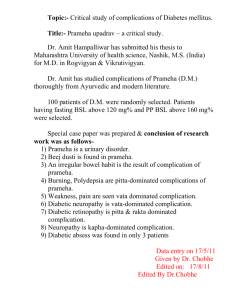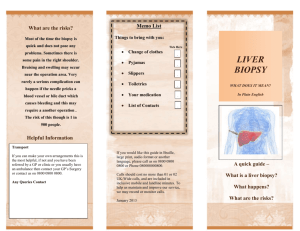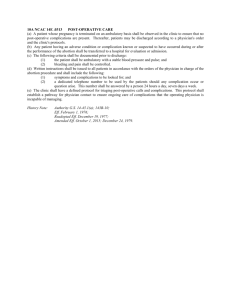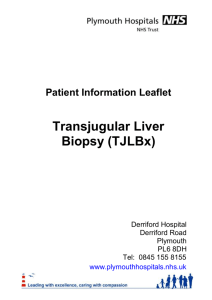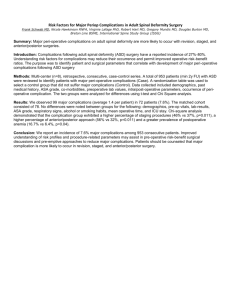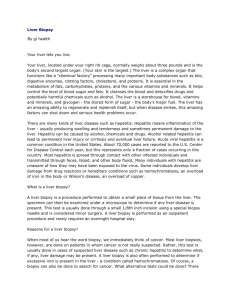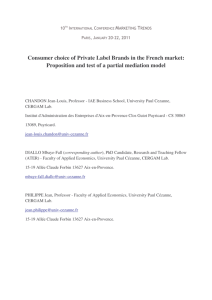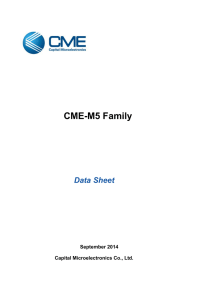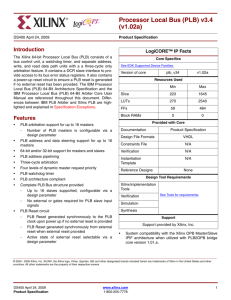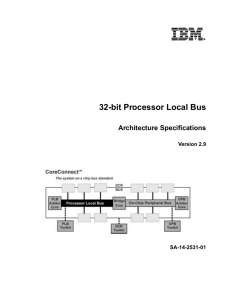Complication rate in relation to the number of passes in
advertisement
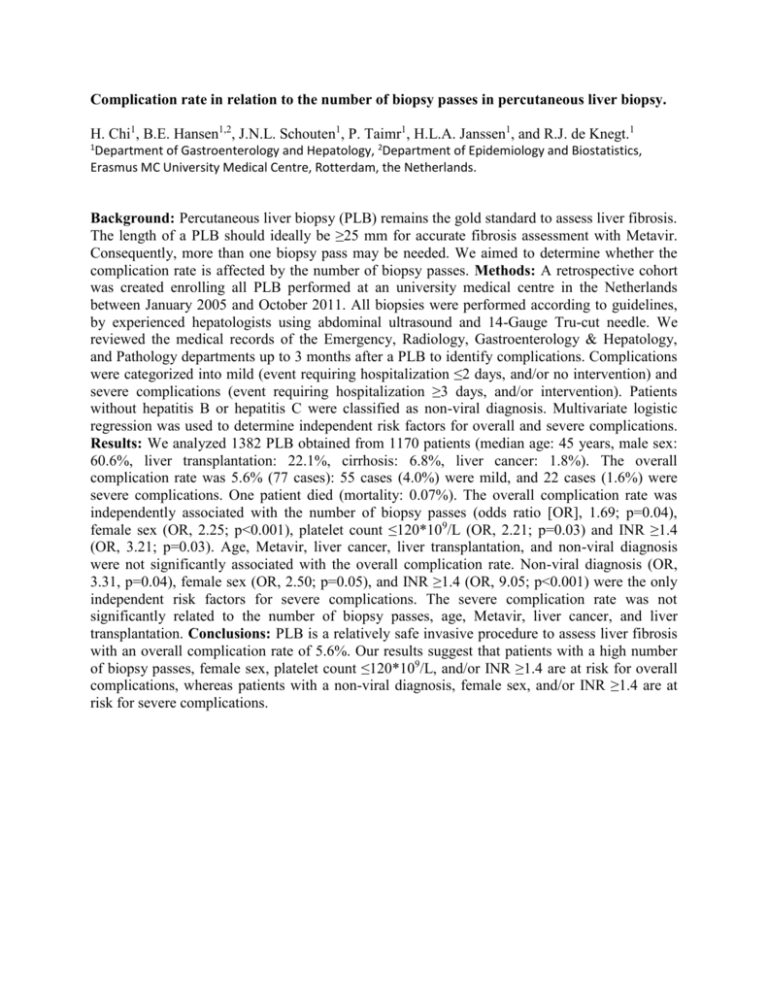
Complication rate in relation to the number of biopsy passes in percutaneous liver biopsy. H. Chi1, B.E. Hansen1,2, J.N.L. Schouten1, P. Taimr1, H.L.A. Janssen1, and R.J. de Knegt.1 1 Department of Gastroenterology and Hepatology, 2Department of Epidemiology and Biostatistics, Erasmus MC University Medical Centre, Rotterdam, the Netherlands. Background: Percutaneous liver biopsy (PLB) remains the gold standard to assess liver fibrosis. The length of a PLB should ideally be ≥25 mm for accurate fibrosis assessment with Metavir. Consequently, more than one biopsy pass may be needed. We aimed to determine whether the complication rate is affected by the number of biopsy passes. Methods: A retrospective cohort was created enrolling all PLB performed at an university medical centre in the Netherlands between January 2005 and October 2011. All biopsies were performed according to guidelines, by experienced hepatologists using abdominal ultrasound and 14-Gauge Tru-cut needle. We reviewed the medical records of the Emergency, Radiology, Gastroenterology & Hepatology, and Pathology departments up to 3 months after a PLB to identify complications. Complications were categorized into mild (event requiring hospitalization ≤2 days, and/or no intervention) and severe complications (event requiring hospitalization ≥3 days, and/or intervention). Patients without hepatitis B or hepatitis C were classified as non-viral diagnosis. Multivariate logistic regression was used to determine independent risk factors for overall and severe complications. Results: We analyzed 1382 PLB obtained from 1170 patients (median age: 45 years, male sex: 60.6%, liver transplantation: 22.1%, cirrhosis: 6.8%, liver cancer: 1.8%). The overall complication rate was 5.6% (77 cases): 55 cases (4.0%) were mild, and 22 cases (1.6%) were severe complications. One patient died (mortality: 0.07%). The overall complication rate was independently associated with the number of biopsy passes (odds ratio [OR], 1.69; p=0.04), female sex (OR, 2.25; p<0.001), platelet count ≤120*109/L (OR, 2.21; p=0.03) and INR ≥1.4 (OR, 3.21; p=0.03). Age, Metavir, liver cancer, liver transplantation, and non-viral diagnosis were not significantly associated with the overall complication rate. Non-viral diagnosis (OR, 3.31, p=0.04), female sex (OR, 2.50; p=0.05), and INR ≥1.4 (OR, 9.05; p<0.001) were the only independent risk factors for severe complications. The severe complication rate was not significantly related to the number of biopsy passes, age, Metavir, liver cancer, and liver transplantation. Conclusions: PLB is a relatively safe invasive procedure to assess liver fibrosis with an overall complication rate of 5.6%. Our results suggest that patients with a high number of biopsy passes, female sex, platelet count ≤120*109/L, and/or INR ≥1.4 are at risk for overall complications, whereas patients with a non-viral diagnosis, female sex, and/or INR ≥1.4 are at risk for severe complications.
